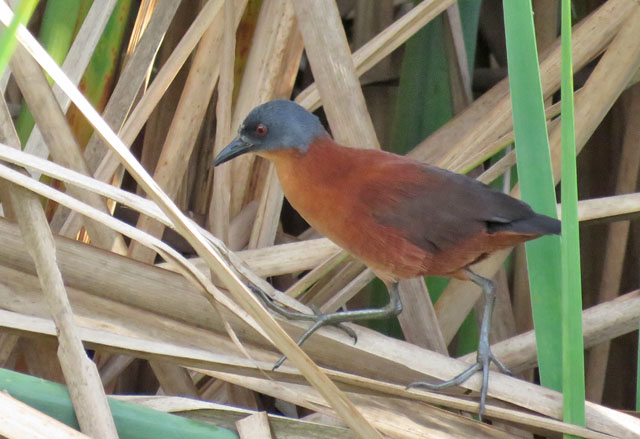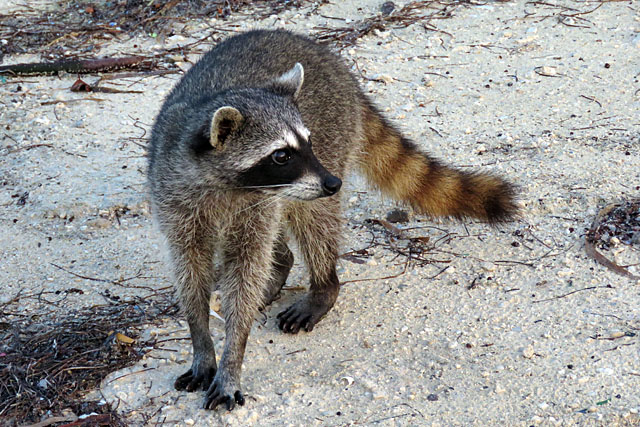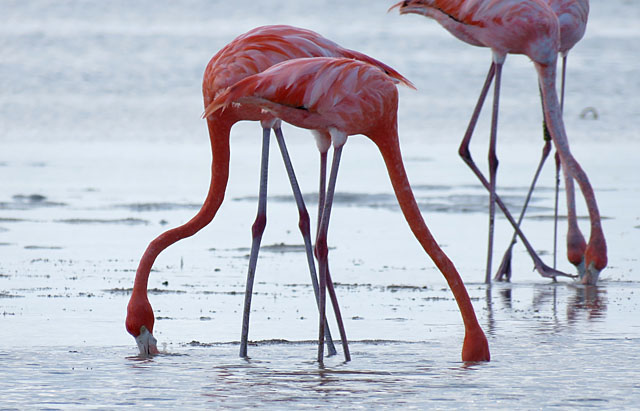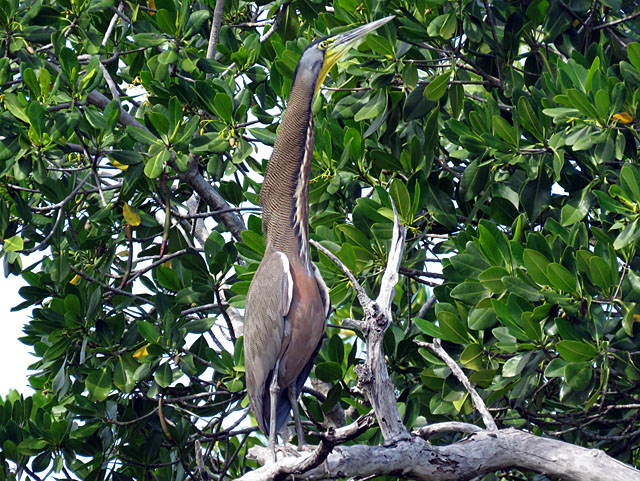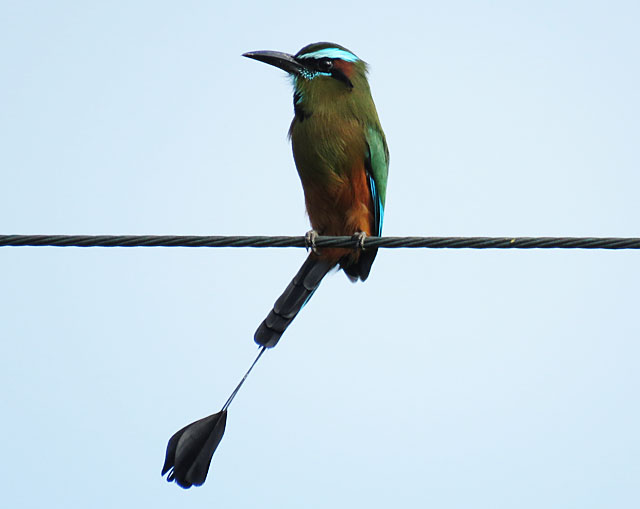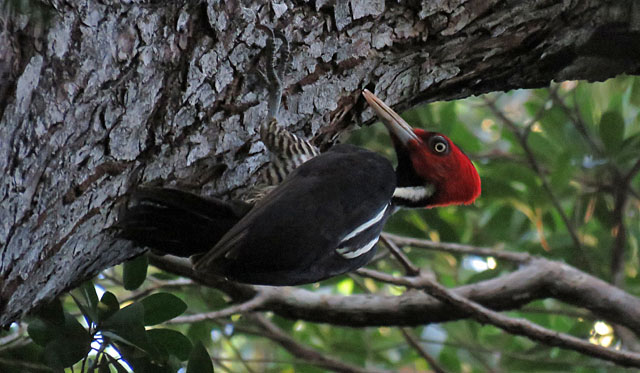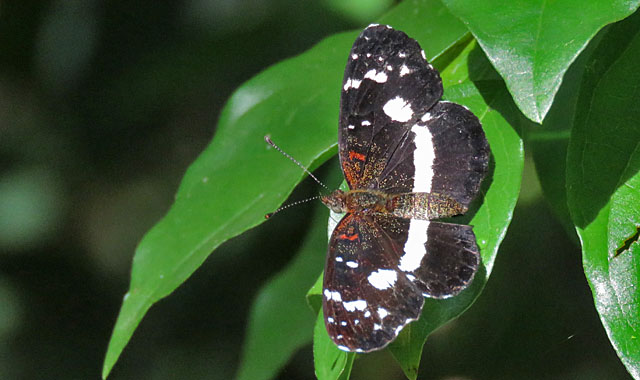From the Field
January 22:
Steve Howell reports from the recently concluded San Blas tour in western Mexico
As always this trip entertains with its avian diversity—such as a Bat Falcon soaring with a Wood Stork, a Ladder-backed Woodpecker on a beach fence post only a few feet from a confiding Wilson’s Plover, and a pile of rotting tomatoes and avocadoes that hosted seven species of warblers, two orioles, and three thrushes as we watched a morning feeding frenzy. And of course, superb food and hospitality at our friendly, family-run hotel make this trip even better.

Bat Falcon and Wood Stork
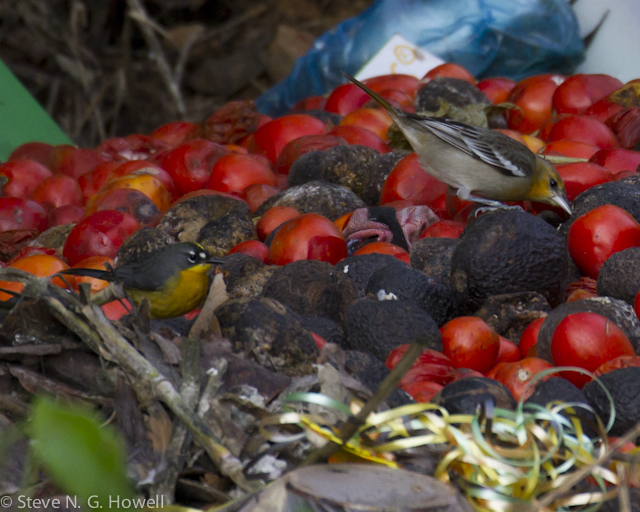
The magic fruit pile, here with Fan-tailed Warbler and Bullock’s Oriole

Among the many other highlights were a showy Lesser Ground-Cuckoo,

Confiding and beautifully sunlit Orange-fronted Parakeets,
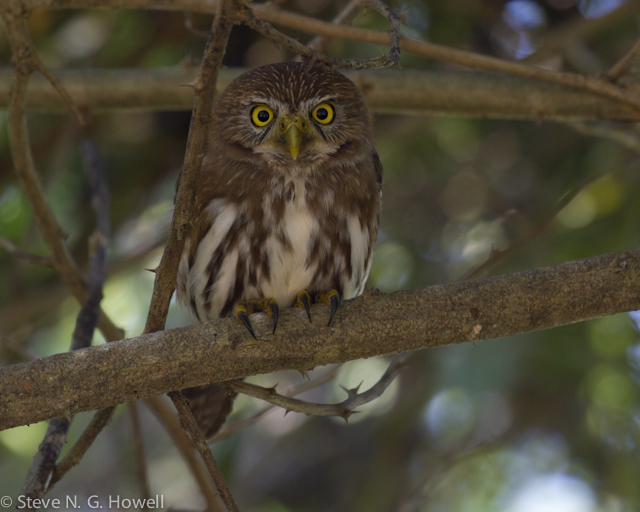
Fierce little Ferruginous Pygmy-Owls,
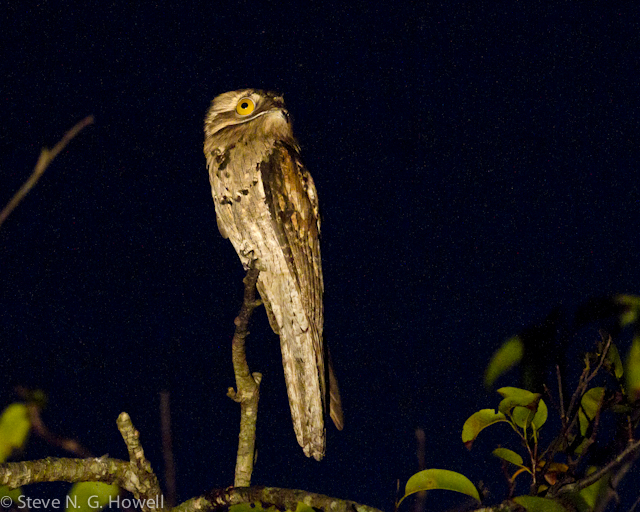
Bizarre Northern Potoos on our evening boat trip,
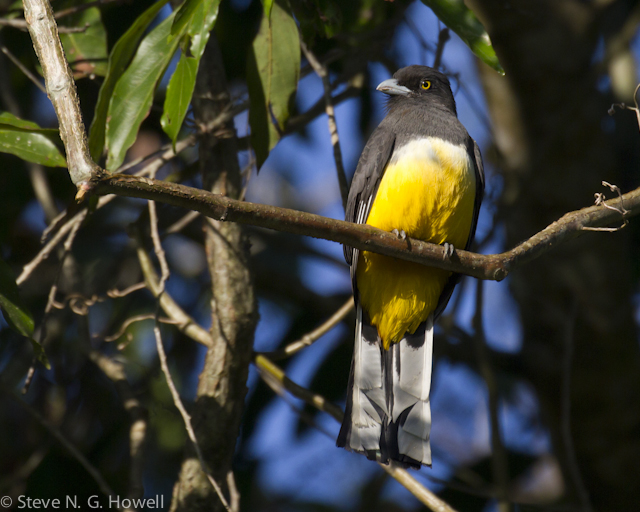
And plenty of colorful tropical birds, including numerous Citreoline Trogons. But all too soon it was over, and I’m already ready to go back!
January 6:
Rich Hoyer on his just-completed Christmastime tour to Oaxaca
What a delightful time of year to visit Oaxaca, with Christmas decorations, festivities, and really fun birding. We visited three different Zapotec ruins, including Monte Albán on the first day.
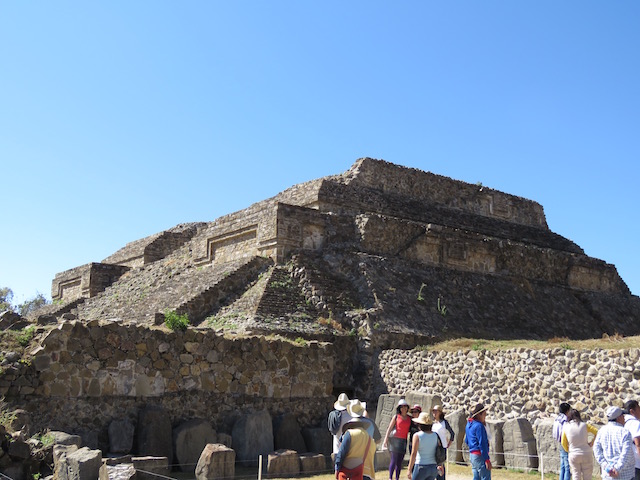
The Noche de Rábanos, or the Radish Festival, has to be seen to be believed, with the amazing creativity of Oaxacans on display around the town square.
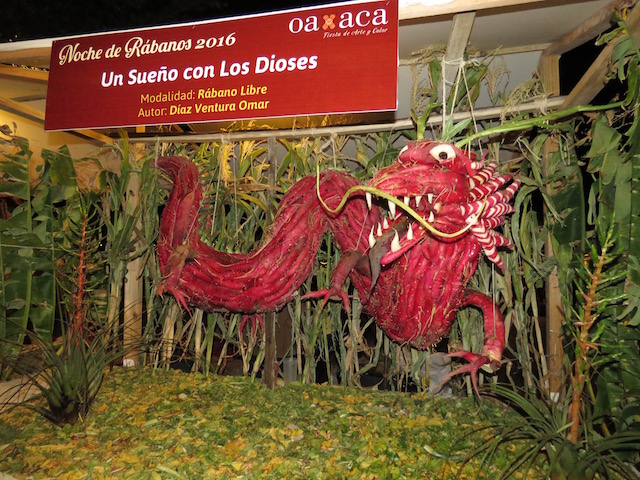
We also visited a rug weaving cooperative in Teotitlán del Valle, including a demonstration on how some of the natural dyes are created.
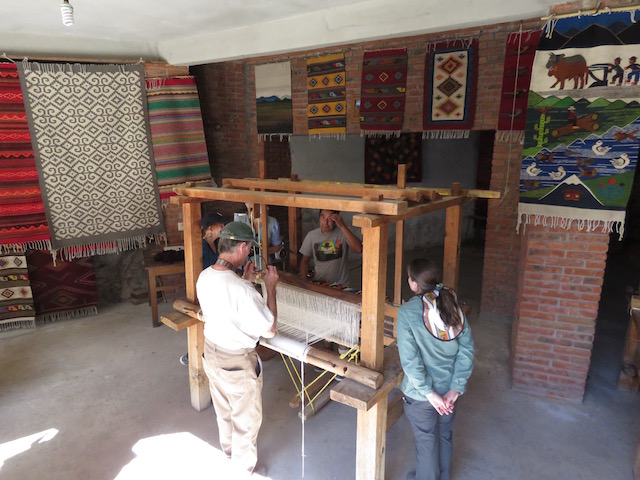
We birded up until lunch every day, seeing well over 275 species of birds, many endemic to Mexico and local to the Oaxaca region. It was still fun to see “our” breeding birds spending winter here including daily Wilson’s Warblers and a few Black-and-white Warblers.
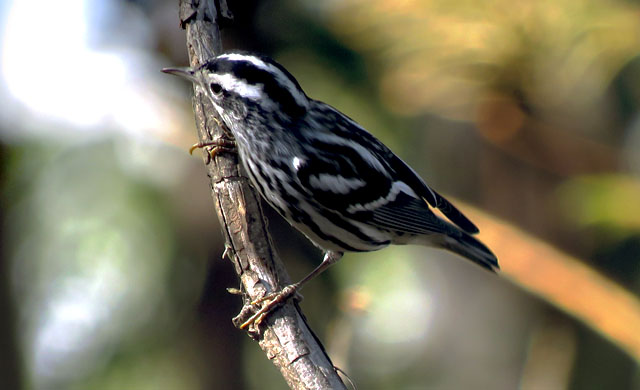
Gray Silky-flycatchers decorated the mistletoe-filled oaks in the higher elevations.
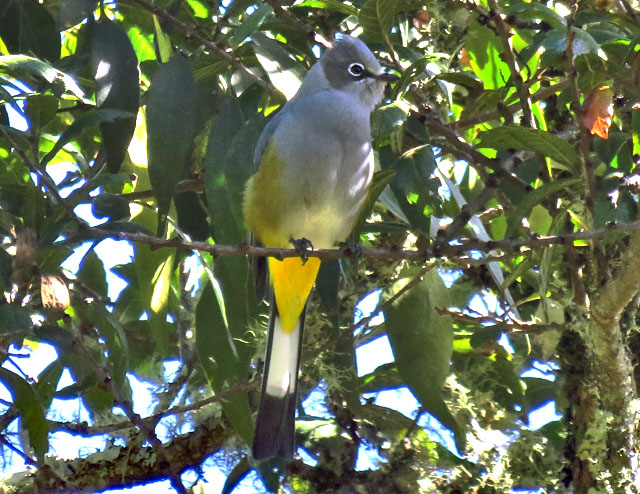
On our side trip to the more tropical Tuxtepec, Ferruginous Pygmy-Owls were at every stop, but it was unusual to have a pair come in together.
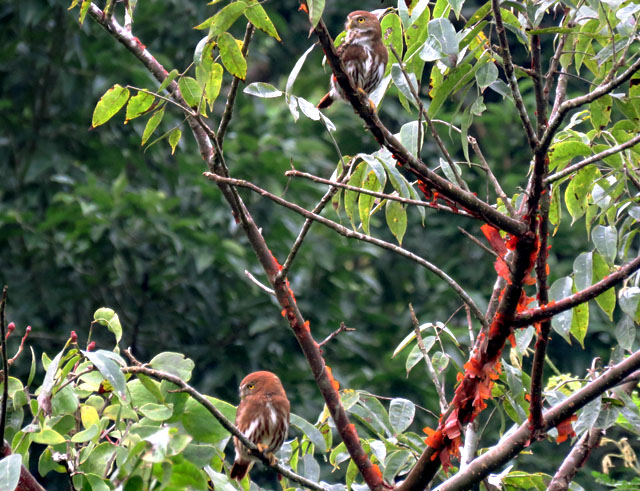
Among the many tour favorites was a cooperative Golden-olive Woodpecker.
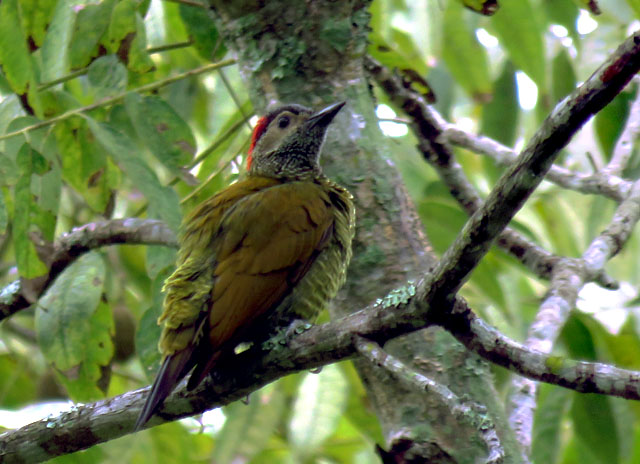
We more than doubled the tour’s master list of butterflies this year, and Northern Green Longwing elicited more oohs and ahhs than any other.
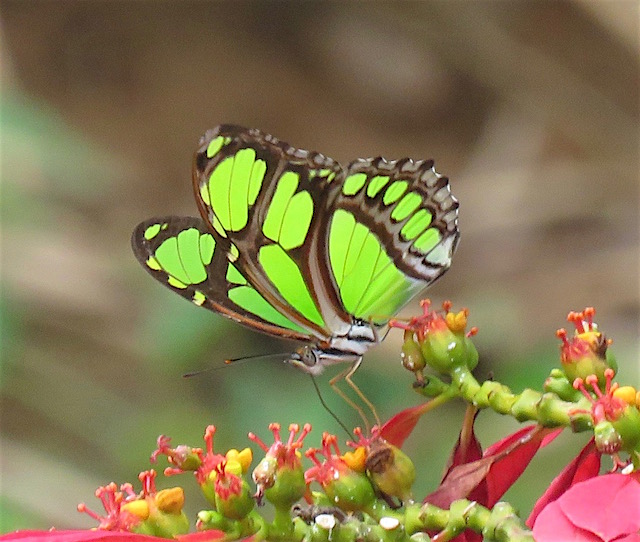
The botany of Oaxaca is fascinating, and our last morning was in an area famous for its diversity of giant cactus species.
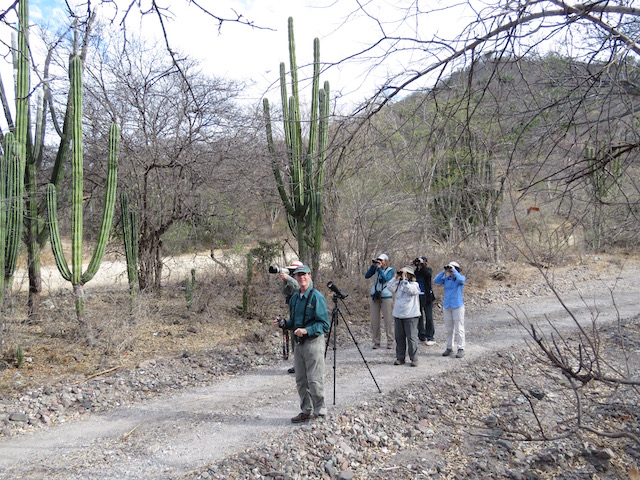
We added many new species here, including several adorable White-lored Gnatcatchers.
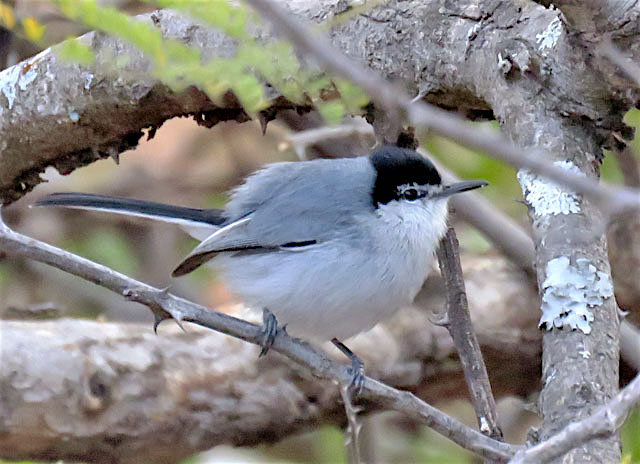
December 13:
James Wolstencroft reports from our recent Tanzania tour.
This year our November Tanzania group had the extreme fortune (for the participants anyway) of witnessing two different kills while on tour in Ngorongoro Crater. The following amazing photos were taken by Linda Bushman, a participant on the tour.
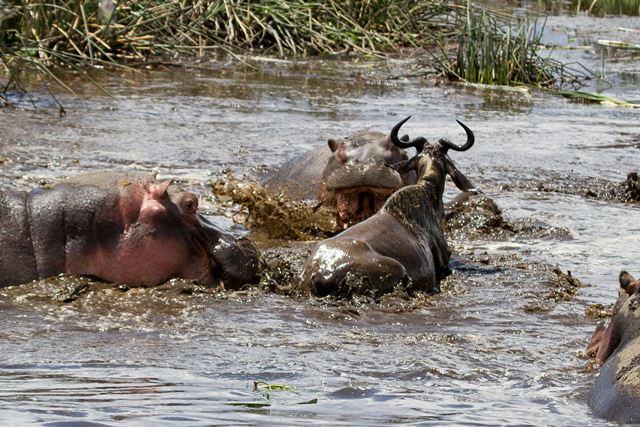
#1: A wildebeest was chased into a hippo pool by a huge pack (23) of hyenas who live in that part of Ngorongoro Crater. We watched the whole event as the wildebeest was chased in a great arc where it eventually ran up against our car and plunged into the pool where it was soon attacked and punctured in the belly by one of the hippos (shown here) then struggled out. The hyenas came around from the other side and brutally attacked its hind quarters before mercifully dragging the ill-fated beast into deep rushes where we could no longer watch.
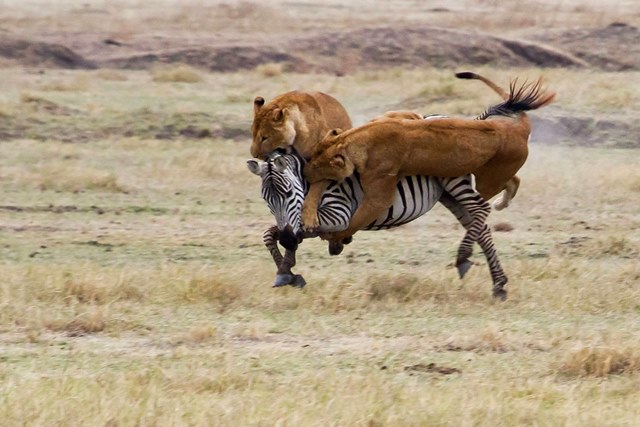
#2: A pair of lionesses executed their entire zebra hunt by using our car as a blind in order to cross the raised track unseen by seven zebra. One unlucky zebra didn't survive the encounter. This was only three hours after the incident at hippo pools!
December 12:
Rich Hoyer on his just-completed tour, Mexico: The Yucatan and Cozumel
For such a short tour, we certainly packed in the sightings and wonderful experiences. Among the more than 230 species of birds in six days, a bold and inquisitive Ruddy Crake on Cozumel was the group’s favorite sighting,
Ruddy Crake
and an even more confiding Cozumel Raccoon that same afternoon will be remembered fondly.
A relaxed racoon
Our morning boat ride through the Ría Lagartos estuary and mangroves was delightful, highlighted by blindingly pink American Flamingos and a Bare-throated Tiger-Heron.
American Flamingoes
Bare-throated Tiger-Heron
A Turquoise-browed Motmot on a power line earlier that same morning was also among the tour favorites.
Turquoise-browed Motmot
The incredibly birdy Vigia Chico road was worth every visit, and one of our first stops featured a huge Pale-billed Woodpecker that foraged for several minutes at close range.
Pale-billed Woodpecker
We also identified more than thirty species of butterfly, such as the Mayan Crescent, a fitting name as we wandered the Maya ruins of Tulum and Chichén Itzá, admiring the structures and pondering the history between distractions provided by birds.
Mayan Crescent

Chichén Itzá
December 1:
Paul Holt on his just-completed tour to Goa, India
Highlights of this year’s 17th tour to the former Portuguese colony of Goa included a good number of South Indian/Sri Lankan specialities such as spectacularly close views of a Sri Lankan Frogmouth, a male Malabar Trogon, several normally recalcitrant Blue-faced Malkohas and no less than five Malabar Pied Hornbills.
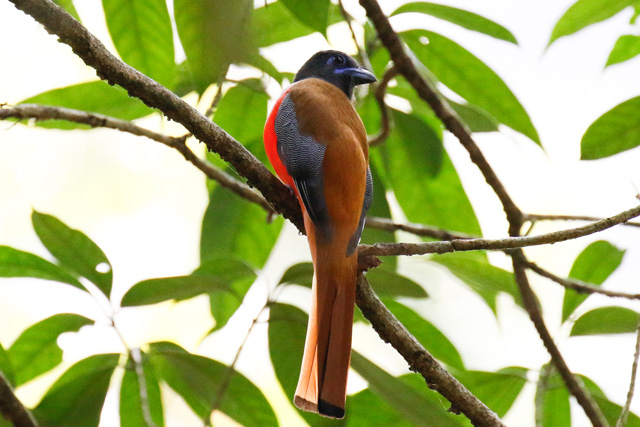
Malabar Trogon
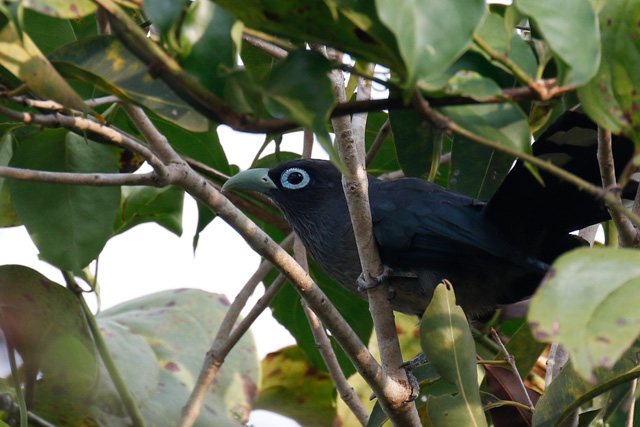
Blue-faced Malkoha
We’d revelled in an enchanting encounter with a male Greater Painted-snipe and his three tiny chicks and had seen no less than eight species of kingfisher including two stunning Blue-eared Kingfishers, the second of which we walked away from satiated at the exceptional views we’d had and one Oriental Dwarf.
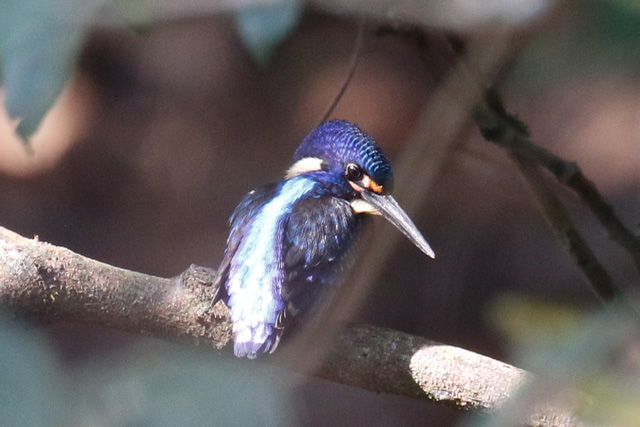
Blue-eared Kingfisher
Some delighted in the very fine collection of wintering (and other) shorebirds totalling more and 30 species and including Common Redshank, Great Knot and Little Pratincole.
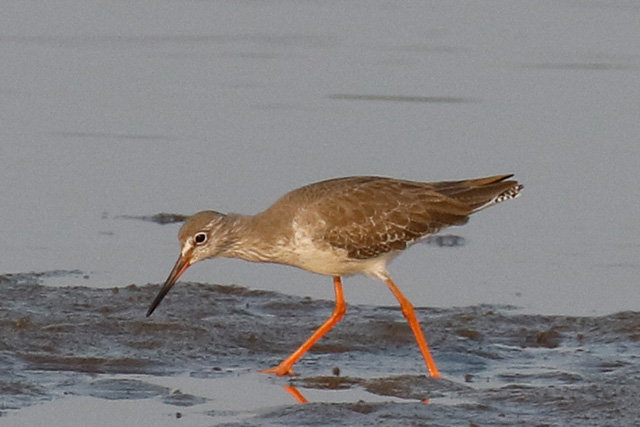
Common Redshank
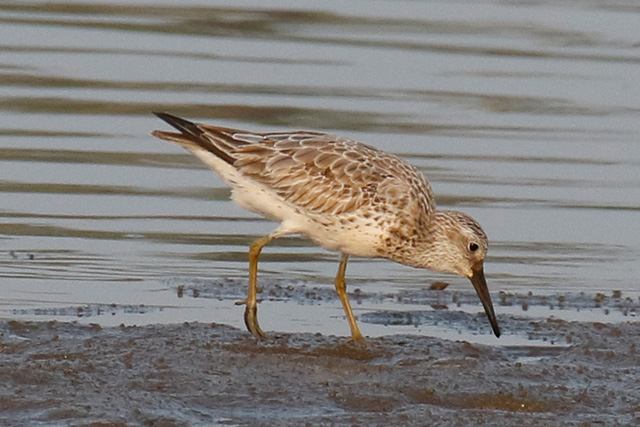
Great Knot
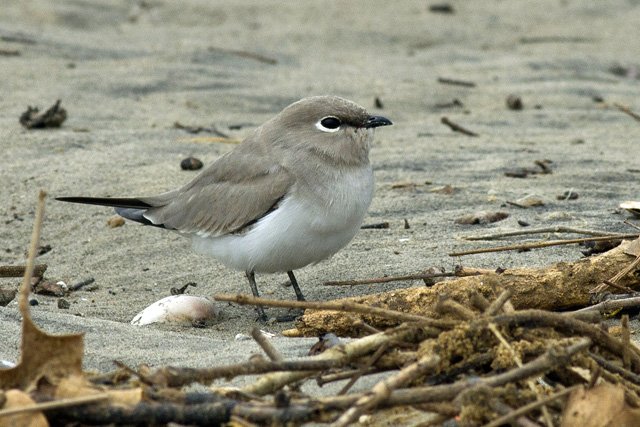
Little Pratincole
Our first ever Goan Crab-plover won the end of trip ‘Bird of the Tour’ poll with other gems such as Blue-bearded Bee-eater, Pallid Harrier, Heart-spotted Woodpecker and Nilgiri Woodpigeon all featuring highly.
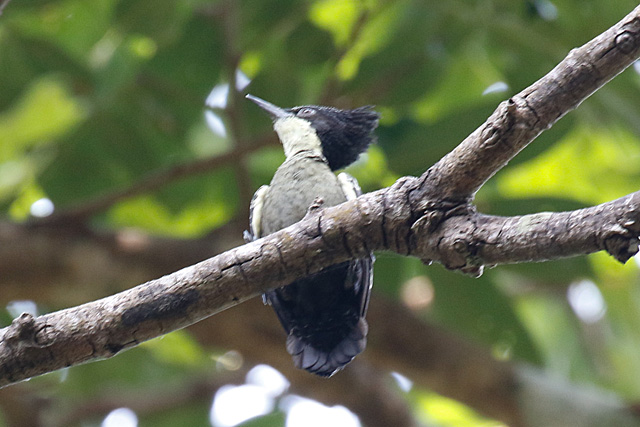
Heart-spotted Woodpecker
We’d had some deliciously varied food, gorgeous weather and seen some stunning sites – all from the comfort of just one, yes just one, charming hotel. Brilliant!
November 28:
Paul Holt reports from NW India
We’ve been having a fantastic time here in northwest India. Highlights so far have included hundreds of harriers – mostly Montagu’s (pictured below) but quite a few ghostly male Pallid – at the Velavadar Black Buck Sanctuary, the site of the world’s largest harrier roost. Also seen were hundreds of pelicans, thousands of larks, a cooperative Painted Francolin, a juvenile Eastern Imperial Eagle and both Paddyfield and Sykes’s Warblers. We’ve also stumbled across a whole host of mammals including Indian Wolf, Jungle Cat and over 1400 Black Buck! Brilliant!
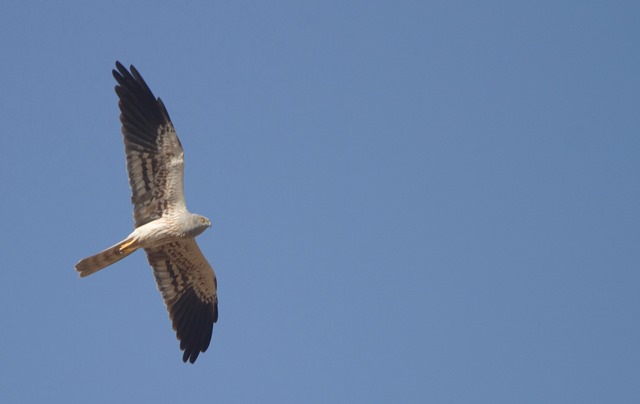
Montagu’s Harrier
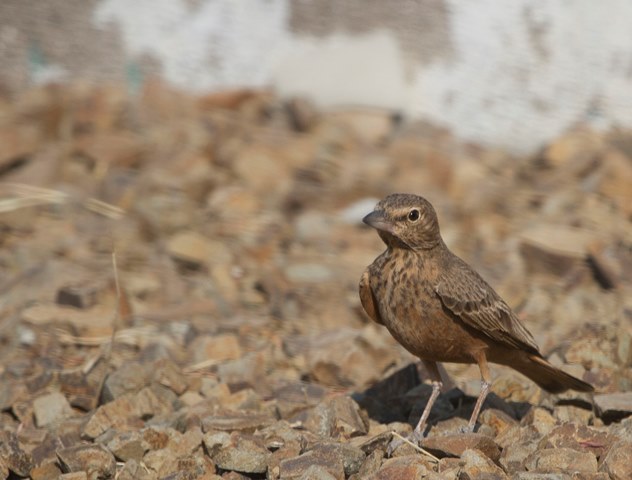
Rufous-tailed Lark
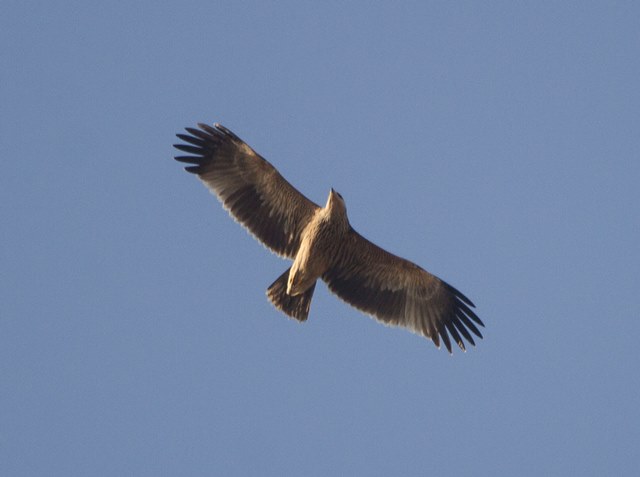
Juvenile Eastern Imperial Eagle
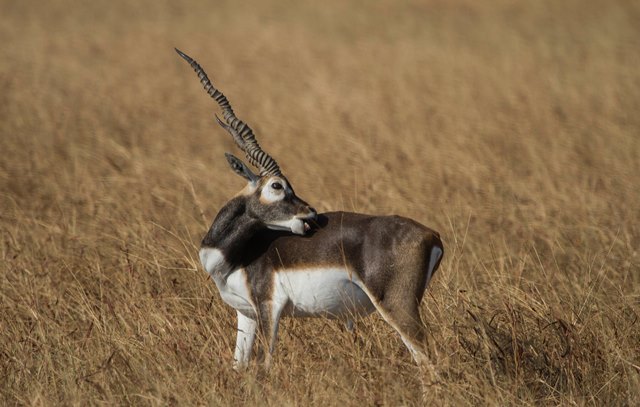
Black Buck
Leaving Velavadar we headed south to Gir. We had five game drives inside the Lion Sanctuary and National Park and saw two separate Lions, one of them uncomfortably close, plus single Leopards (pictured below) on a remarkable three safaris. Other highlights included good numbers of Indian Stone-curlews, Jungle Prinia and seven White-bellied Minivets (pictured below). From there we headed west to the port city of Jamnagar where massive numbers of both Lesser (3400) and Greater Flamingo (1620), Common (1025) and Demoiselle Cranes (800) awaited. For many of us the two parties totalling 135 Indian Skimmers were an undoubted highlight. The local forest department lent us a motor launch and we headed out in to Marine National Park where we were enthralled by exceptional close-range looks at specialities such as Crab-plover (1550) and Great Knot. We’re moving still further west – beyond Bhuj and closer to the Pakistan border today where we’re hoping to see Grey Hypocolius and White-naped Tit among others so watch this space…
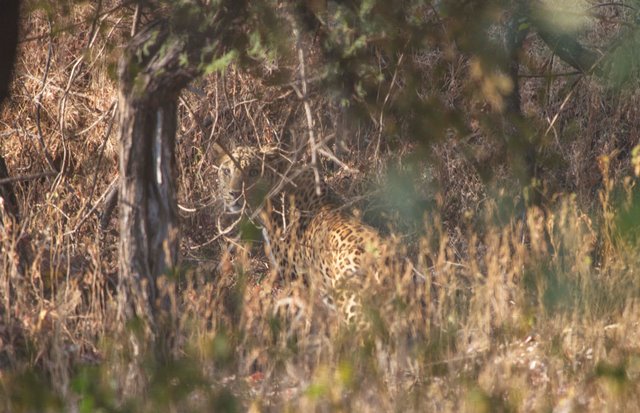
Leopard
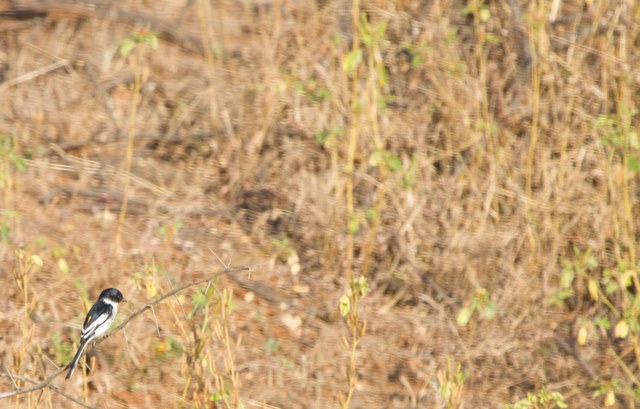
White-bellied Minivets
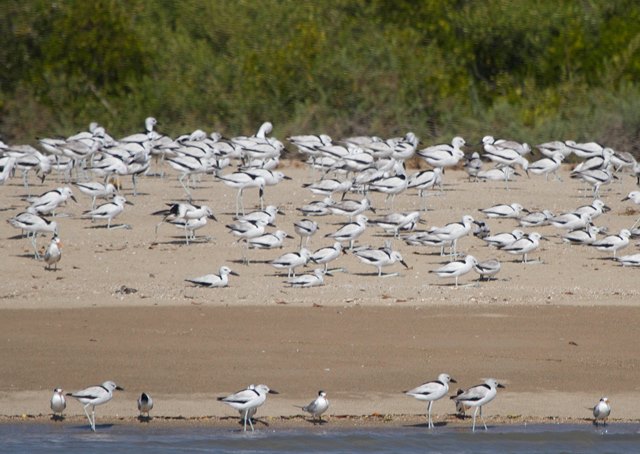
Crab-plovers
November 28:
Jon Feenstra reports from his recently completed Southern Ecuador tour.
After birding mostly the eastern slope (Amazon watershed) of southern Ecuador, we’re now in the dry forest of the lowland west. The changes in habitats have been incredible as we’ve gone from above treeline to the low rainforest foothills, back into the highlands, crossing rain shadow valleys and zigzagging the continental divide. The birds have been equally diverse and the highlights many. Some of the favorites have been: Pale-headed Brushfinch (one of the rarest birds in the world) eating bread, the ancient look of the Gray Tinamou, Fiery-throated Fruiteater, and, of course, the Jocotoco Antpitta. 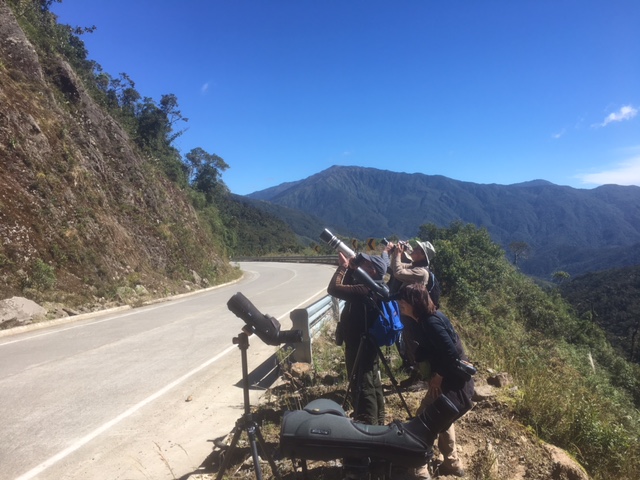
The gang watching a Streak-throated Bush-Tyrant from the roadside near Reserva Tapichalaca
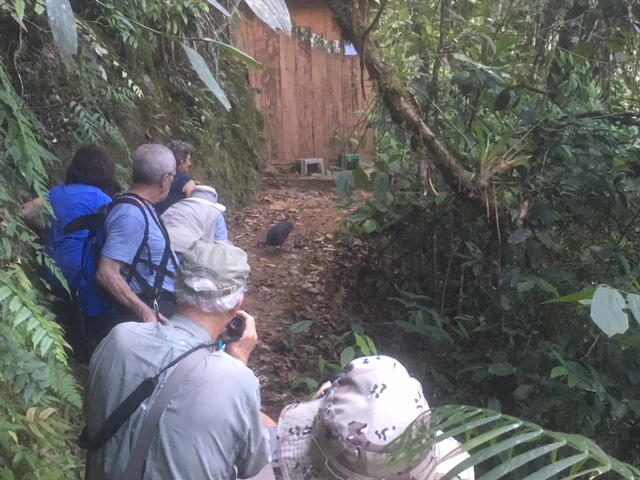
The Gray Tinamou creeps out of the forest too close for long lenses.

Sometimes we need to share the road with llamas.
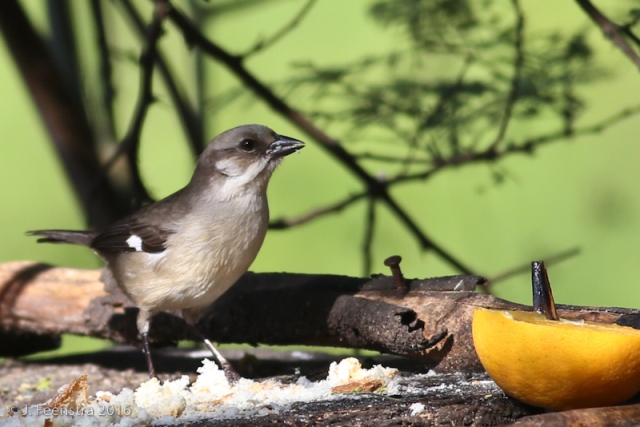
Pale-headed Brushfinch slums it with the bread-eating crowd.
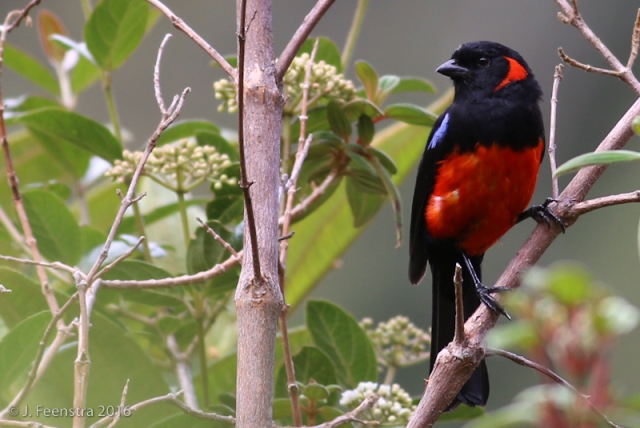
Scarlet-bellied Mountain-Tanager in Podocarpus National Park
November 21:
Steve Howell reports from our Chile tour
Fabrice Schmitt and Steve Howell report from the mid-point of the Chile tour, following some great birding in windswept Patagonia and the towering temperate rainforests of the Lake District, where we successfully sought all of the notoriously skulking tapaculos,
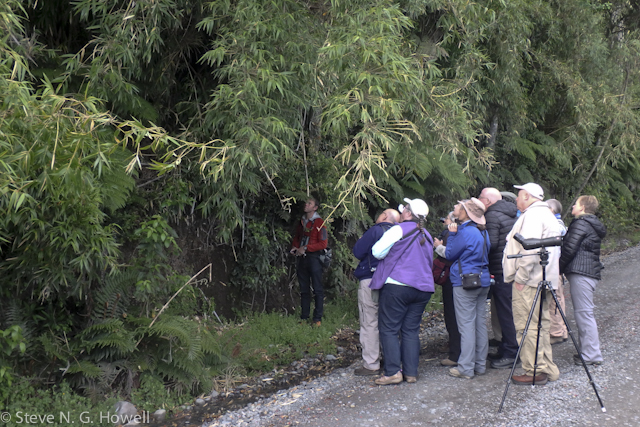
even an Ochre-flanked Tapaculo, which eventually hopped into the open.
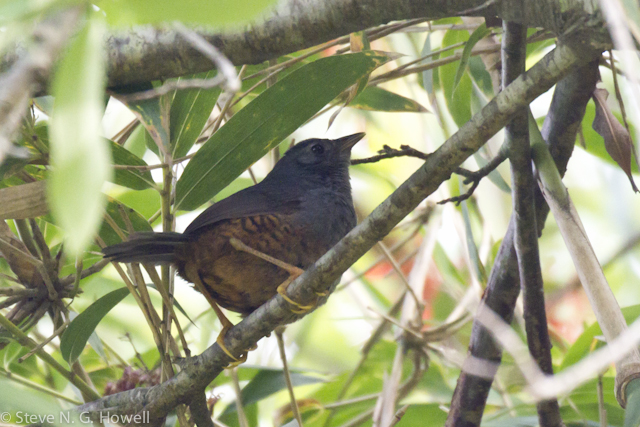
The growing King Penguin colony on Tierra del Fuego included big ‘wooly’ youngsters for the first time,
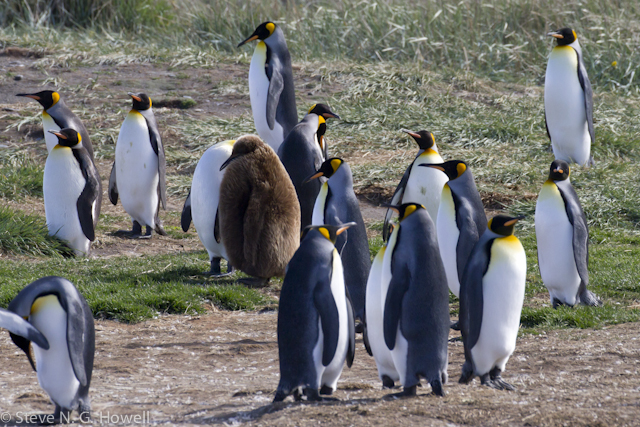
and was celebrated by endemic Patagonian beer.
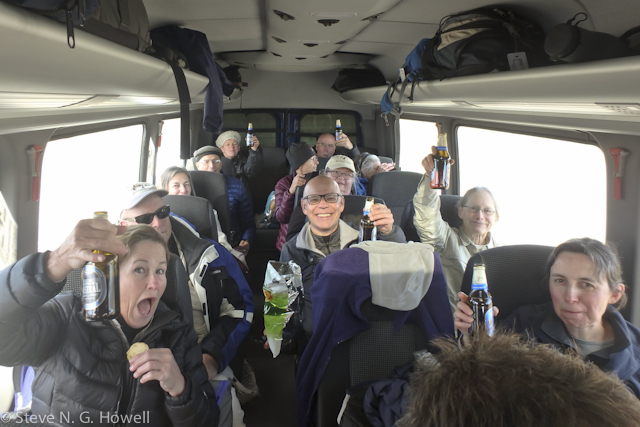
Other highlights have included the stunning White-bridled (née Black-throated) Finch,
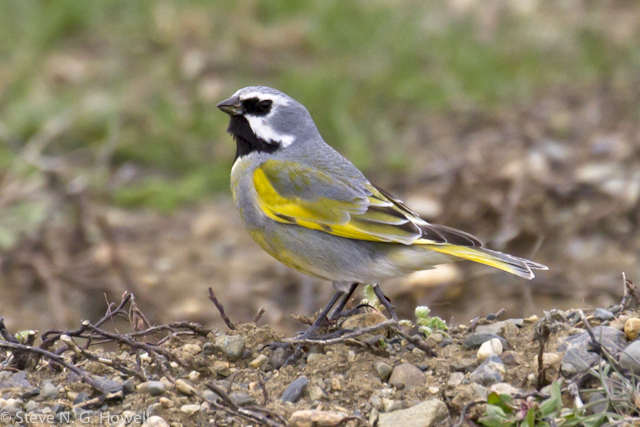
a beautiful female Magellanic Woodpecker that flew in right above us,
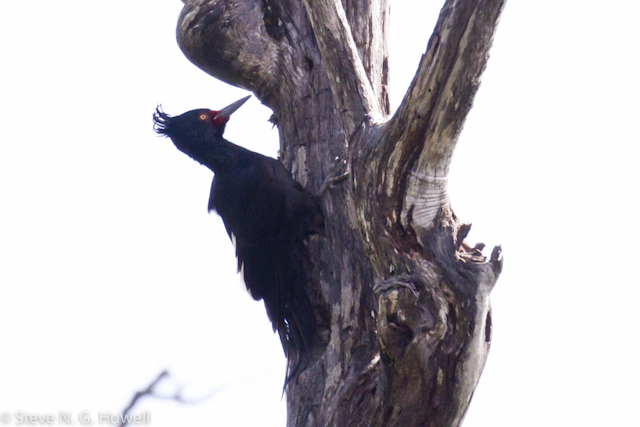
point-blank Austral Parakeets feeding outside the bus window,
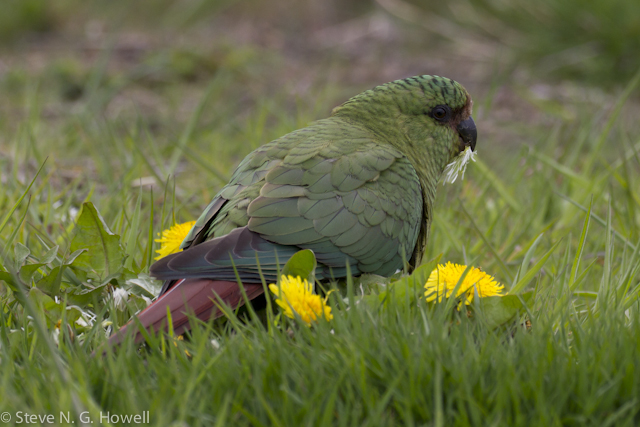
the understated and highly endangered Ruddy-headed Goose,
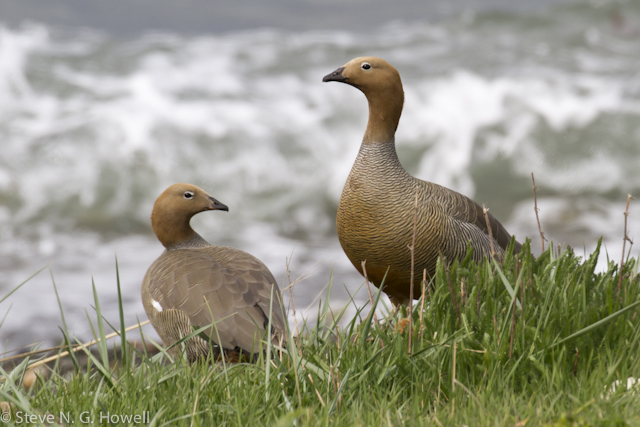
and the endearing little White-throated Treerunner.
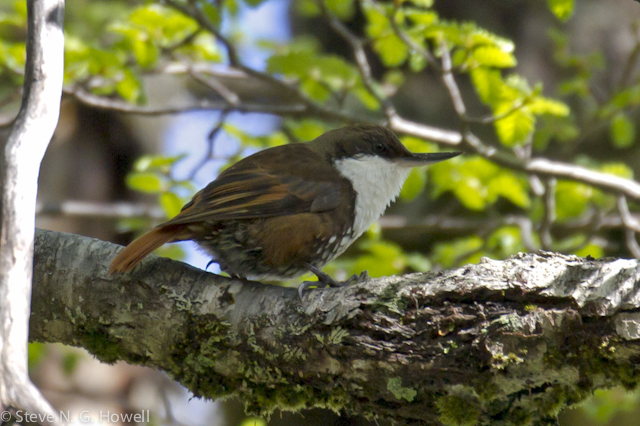
Now in central Chile and getting ready for our Humboldt Current pelagic.
November 21:
Gavin on his recently completed Australia Queensland and New South Wales tour
Our 2016 Eastern Australia Tour that covers Queensland and coastal New South Wales kicked off with a very nice week around Cairns and the Atherton Tablelands. From a surprisingly cooperative Azure Kingfisher that allowed close approach by our boat on the Daintree River to a fantastic experience with a pair of Southern Cassowaries in the rainforests near Kuranda, there was a wealth of birds at every turn.
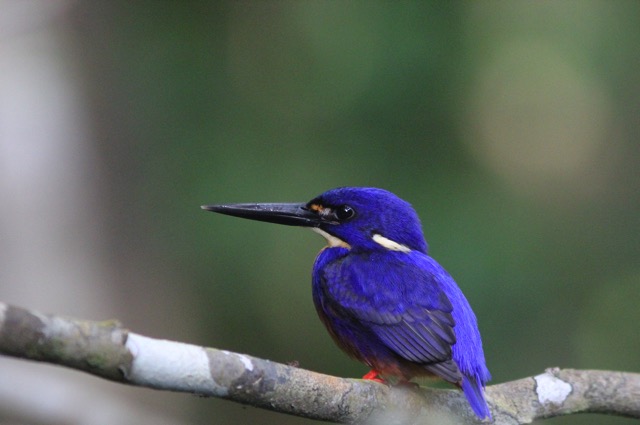
Azure Kingfisher
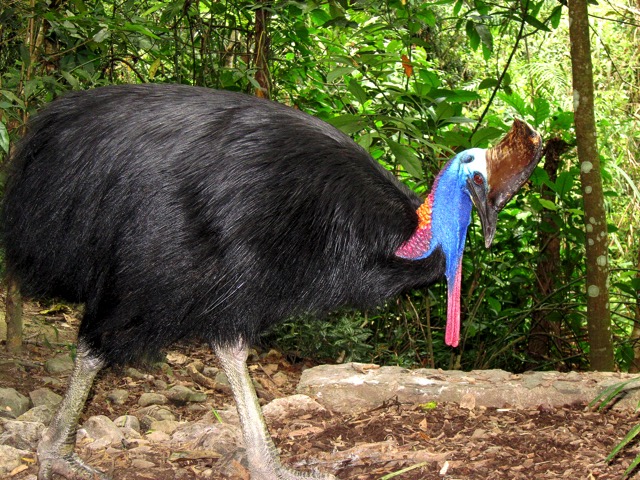
Southern Cassowary
On our first afternoon we enjoyed close views of the oddly plumaged Rajah Shelduck at the Cairns Botanical Gardens.
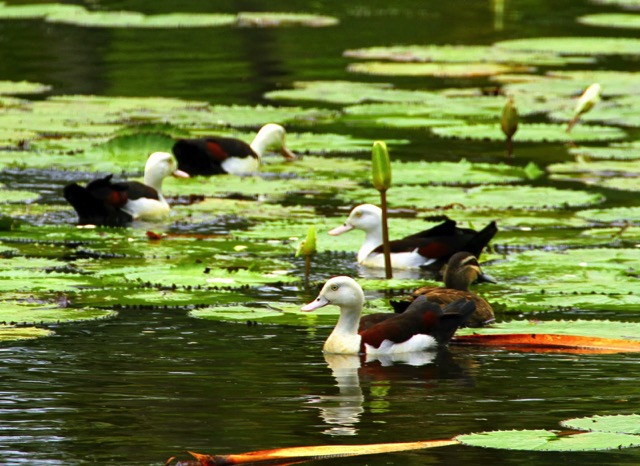
Radjah Shelduck: photo by Tim Dolby
Our time up in the rainforest patches on the Atherton Tableland was spectacular, with very cooperative Victoria’s Riflebirds and Spotted Catbird among our best finds.
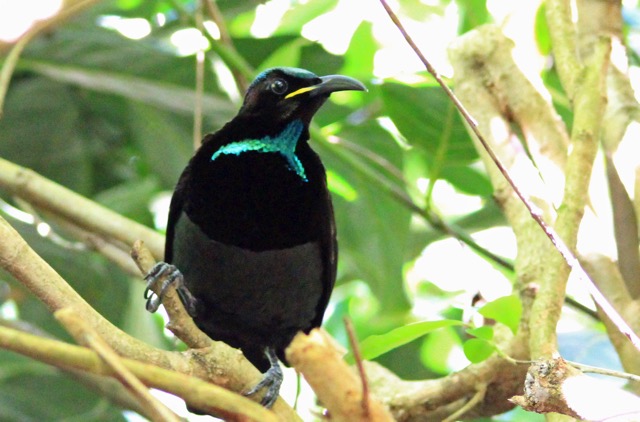
Victoria’s Riflebird
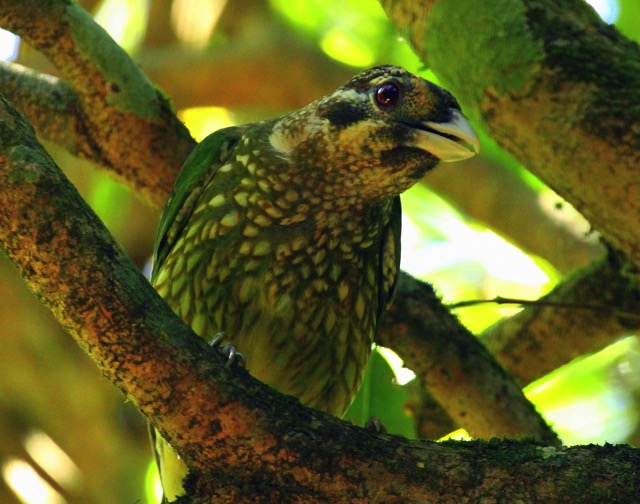
Spotted Catbird: photo by Tim Dolby
A special mention must go to the areas many species of mammals, especially this day-active Lumholtz’s Tree-Kangaroo, and the very extroverted Platypus that we found near Yungaburra.
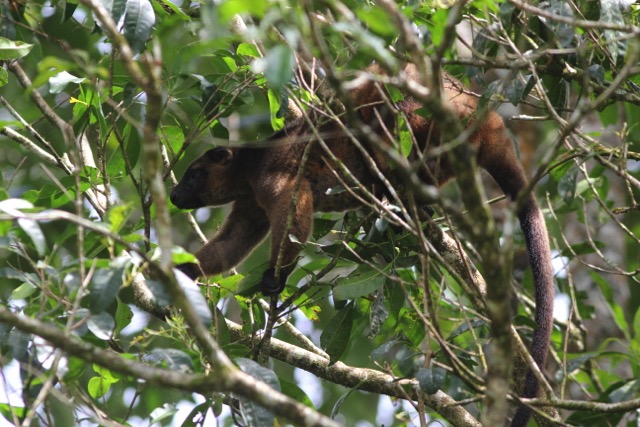
Lumholtz’s Tree-Kangaroo
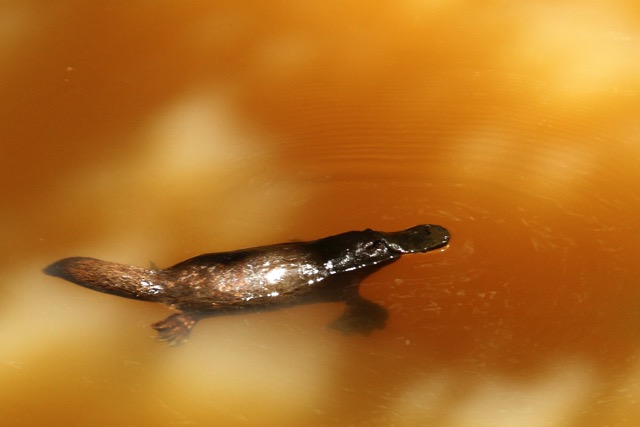
Platypus: photo by Tim Dolby
The dry forests on the north side of the tablelands provided a great contrast to the humid rainforests, and produced excellent views of our hoped for Australian Bustards.
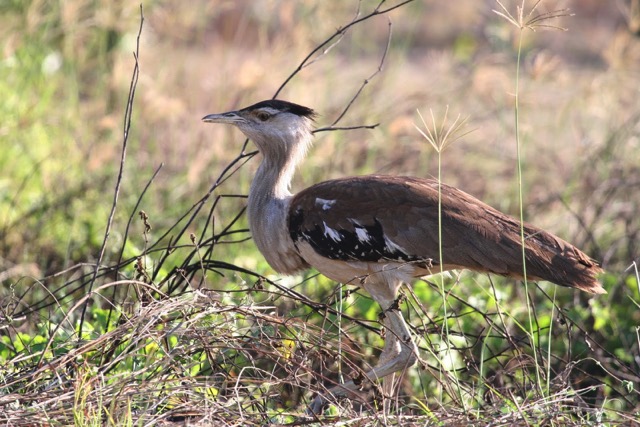
Australian Bustards: Photo by Tim Dolby
After nearly a week inland from Cairns we then returned to the coast… Once back on the coast we spent a great day out on the Great Barrier Reef where we found courting pairs of Brown Boobies and thousands of Sooty Terns and Brown Noddies, as well as a surprising immature Red-footed Booby and great views of Bridled Tern.
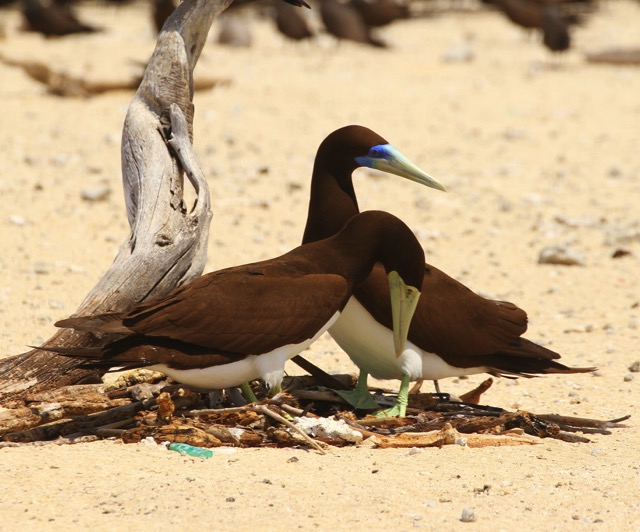
Brown Booby: photo by Tim Dolby
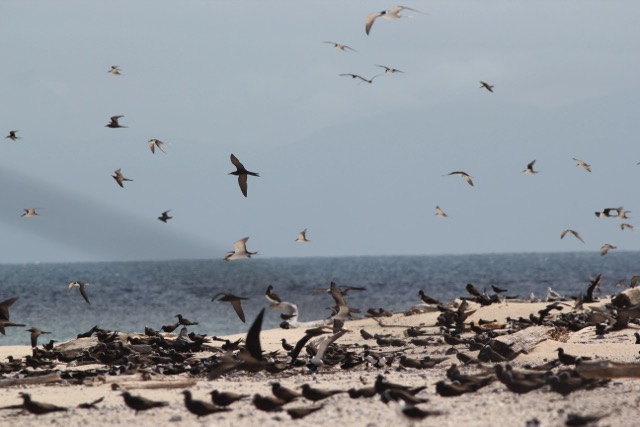
Michaelmas Bay
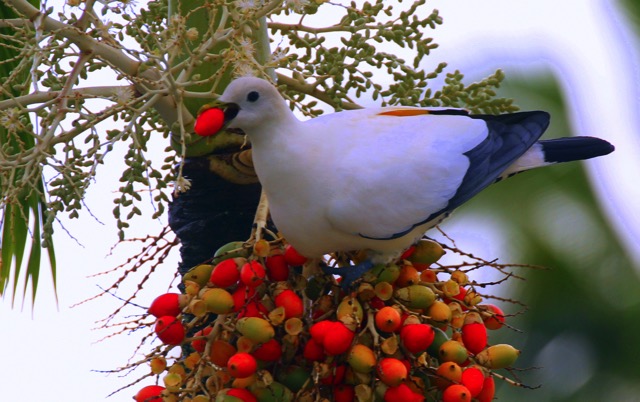
Torresian Imperial-Pigeon: photo by Tim Dolby
The next day we bade farewell to the tropical north and its gaudy Torresian Imperial Pigeons and flew south to Brisbane and the famous O’Reilly’s Lodge.
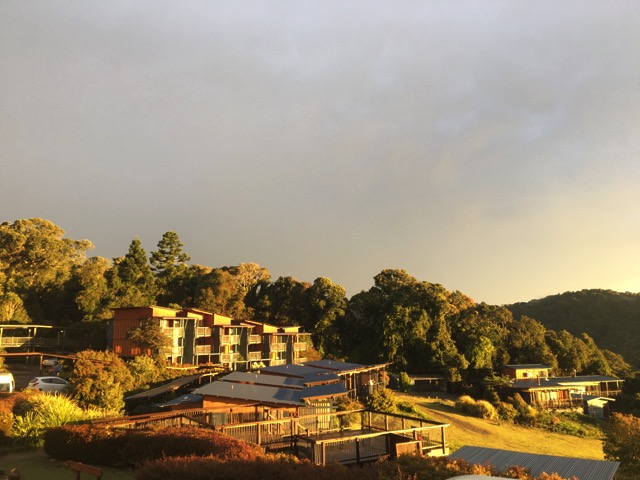
O’Reilly’s Lodge
The birds around O’Reilly’s are almost tame, with forest birds often coming to investigate your shoelaces. Even normally very shy birds like Eastern Whipbird can be easy to spot here, and more bold birds like the perky Eastern Yellow Robin can be positively pushy.
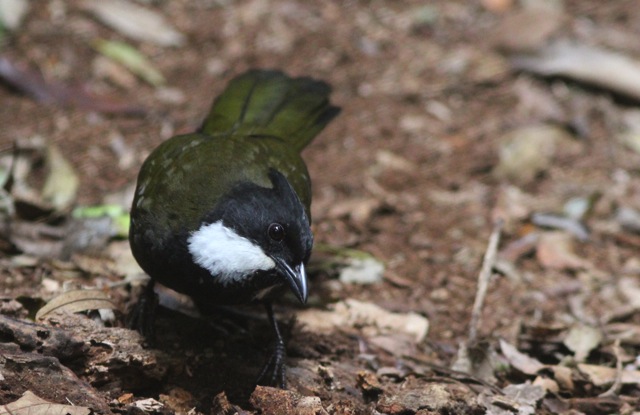
Eastern Whipbird
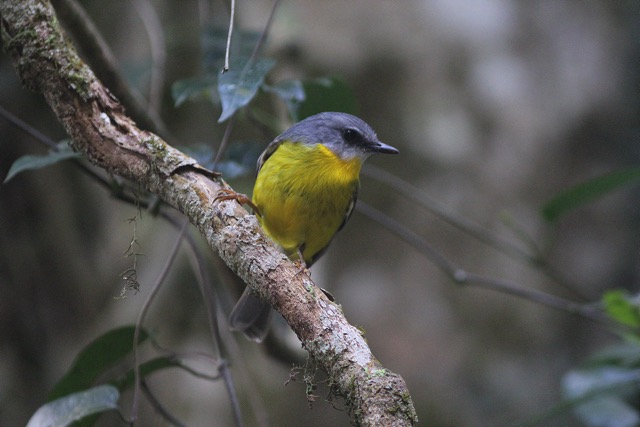
Eastern Yellow Robin
The gorgeous Regent Bowerbirds are common visitors around the lodge, with some even hand-tame.
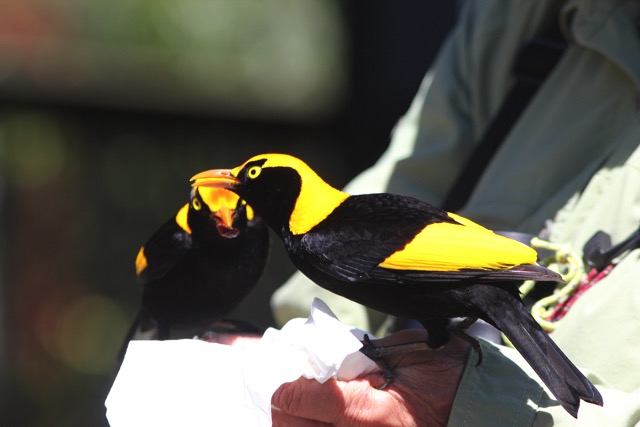
Regent Bowerbirds
Our scheduled pelagic trip out of Sydney was a no-go this year due to high winds and swell, but our backup visit to Barren Grounds National Park gave us superlative views of Eastern Bristlebird. Royal National Park was a great and scenic backdrop for our final day and a half, with Superb Lyrebird showing well. We finished the Eastern Tour with 281 species, and an amazing 411 species for the two tours combined. It is always with a touch of sadness that I board the plane to leave this amazing continent, and I very much look forward to next year’s duo of tours! (Photos by Gavin Bieber unless otherwise listed)
November 11:
Gavin Bieber on his recently completed Australia: Victoria & Tasmania tour.
Our inaugural 17-day tour of Southeastern Australia encompassed an amazing variety of landscapes and over 270 species of birds. We started around the cosmopolitan city of Melbourne, where we spent a productive day along the coastal wetlands which held a wealth of waterfowl like this Australian Wood Duck and local leaders helped us track down birds like Powerful Owl and nesting Tawny Frogmouths.

Australian Wood Duck

Powerful Owl

Tawny Frogmouth
Then we headed north through the Great Dividing Range where we enjoyed a Superb Lyrebird stomping through the tree-fern clad temperate rainforests.

Superb Lyrebird
Around Chiltern we found conditions to be extremely wet, but these Sugar Gliders seemed warm and snug in their nest box.

Sugar Gliders
The wet and unseasonably cold weather persisted throughout the entire spring of 2016, but at Deniliquin we were able to access the right paddocks to locate this beautiful female Plains-Wanderer despite the conditions.

Plains Wanderer
We then headed west towards the more wild Northwest corner of Victoria and its large Mallee and desert parks, stopping to admire gems like this striking White-winged Fairy-Wren and this stunning Major Mitchell’s Cockatoo along the way.

White-winged Fairy-Wren

Major Mitchell’s Cockatoo
We found NW Victoria still locked in the grips of an extended winter, with repeated cold fronts dropping unprecedented rains and high winds across much of the region. The birds were still around though, and many seemed to be in full breeding mode, such as this handsome Malleefowl.

Malleefowl
Reaching the Victoria coastline, truly one of the most scenic parts of the country, we sought out birds like this skulking Rufous Bristlebird in the heathland, and enjoyed repeated views of the surprisingly common Rainbow Lorikeet.

Victoria coastline

Rufous Bristlebird

Rainbow Lorikeet
The tour wrapped up with a short but excellent trip to Tasmania, where we located all of the Tasmanian endemics such as this Green Rosella, enjoyed intimate views of the ethereally white form of Gray Goshawk, and scoured the beautiful coastline for shorebirds like Black-faced Cormorant (our 5th species of Cormorant for the tour) and the menacing Pacific Gull.

Tasmanian Coast

Green Rosella

Gray Goshawk

Black-faced Cormorant

Pacific Gull
Although we were admittedly hampered a bit by the highly unusual weather it was a fantastic trip, with 272 species of birds and 18 mammals including Koala, Echidna and Greater Glider and one that I am very much looking forward to repeating in 2018.

